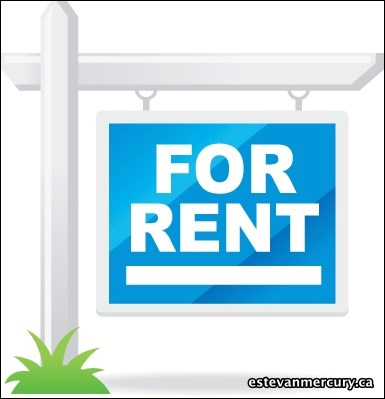The prognosis for anyone hoping to find rental accommodations in Estevan is getting bleaker and bleaker.
According to the latest report from Canada Mortgage and Housing Corporation's spring rental market survey, the vacancy rate in Estevan as of April was one per cent. That was down from 2.5 per cent in April 2011.
"Estevan's vacancy rate was the lowest among the province's seven census agglomerations," a CMHC press release noted. "Heightened oil exploration and robust job growth fuelled demand for rental units in that region."
Of the few rental properties available, bachelor suites were the most plentiful at 3.8 per cent. There was a 1.8 per cent vacancy rate for one bedroom suites.
As has been the case in past surveys, two bedroom rental properties are the most sought after and have a vacancy rate of zero per cent. The prospects for a rental property with three or more bedrooms are a little bit better as the rate has moved from zero per cent in April 2011 to three per cent this year.
Throughout the province, the vacancy rate also dropped, going to an average of 2.1 per cent from 2.5 per cent last year.
The recent economic boom in Yorkton has caused that community to experience problems similar to Estevan with their rate plummeting from 4.6 per cent to 1.4 per cent. Swift Current was the other community to have a major decline. North Battleford and Prince Albert were the only two cities where the rate went up.
In the province's two metropolitan areas - Regina and Saskatoon - the situation is not much better. Regina has the lowest rate among CMA's at .6 per cent while Saskatoon is at 3.1 per cent.
Along with having the lowest vacancy rate among cities outside of Saskatoon and Regina, Estevan can also lay claim to the highest average rental prices for the entire province.
According to the report, Estevan's average rental price is $1,006 marking the first time the city has posted an average of over $1,000.
Similar to the vacancy rate, the robust local business atmosphere has led to increased prices. Estevan is the only community in Saskatchewan over the $900 mark with Saskatoon in second place at $891.
In the breakdown, the report noted that bachelor suites are the cheapest among local rental properties at $544. A one bedroom suite costs an average of $875 while a two bedroom suite is $1,104 - the highest in the province by well over $100. The average for three bedroom suites is $1,062 which is third highest in Saskatchewan.
Lloydminster is second to Estevan at an average of $838 while Prince Albert is third at $817. Not surprisingly no community experienced a decline.
Saskatoon's average rate has climbed to $891 while Regina has an average of $876.
The CMHC also released its quarterly housing report and it noted that housing starts are up in the province thanks to a recent surge in Regina.
After 4,152 single-detached starts in 2011, housing starts in this segment will improve to 4,500 units this year, fuelled largely by gains in Regina. Next year, rising new home supply levels, particularly the inventory of completed and unabsorbed units, will compel builders to temper starts to 4,200 units.
Despite the anticipated moderation in activity in 2013, annual production this year and next will rank among the highest in over 30 years.
Following a 39 per cent increase to 2,879 units last year, Saskatchewan's multi-family starts will rise to 3,400 units in 2012 before moderating to 3,200 units next year. Low rental apartment vacancy rates, coupled with incentives from multiple levels of government, will help maintain a strong pace of starts over the forecast period. Meanwhile, demand for ownership oriented units will continue to be fed by residents seeking a lower priced option to the single-detached sector.
Resale transactions in Saskatchewan will increase by over 12 per cent in 2012 to 13,500 units and then moderate to 13,050 transactions next year. Resale transactions will be supported by advances in Saskatchewan's population and low mortgage rates which will help cushion some of the effects of rising house prices. In addition, public sector incentives in the form of federal and provincial first-time homebuyer income tax credits will motivate some households to make the move towards homeownership.
The combination of low mortgage rates along with solid job and wage growth in Saskatchewan will help sustain a shift towards higher priced homes. Nonetheless, a relatively high supply of resale homes will help units in 2013. In Saskatchewan, a record level of migration will help lift MLS® sales by over 12 per cent to 13,500 units, and then remain elevated at over 13,000 units in 2013.
The prairie's average MLS price will increase by near three per cent in 2012 to about $327,000. A similar level of growth will raise the average price toward $337,000 in 2013. Over half of Alberta's major markets remain in buyers' market conditions, holding back price growth.
In Saskatchewan, a double-digit growth in sales will help lift the average resale price by nearly five per cent to $270,300 in 2012. Price growth will moderate in 2013, with the average resale price in Saskatchewan rising to $273,700.



